OSHCamp 2023 Badge
A collaboration with oomlout and psd, August 2023.
🎫 Tickets now on sale for OSHCamp 2023! - Tickets for both the Talks and Workshops on 26-27th August available at the link. Please note that there are separate tickets for both days!
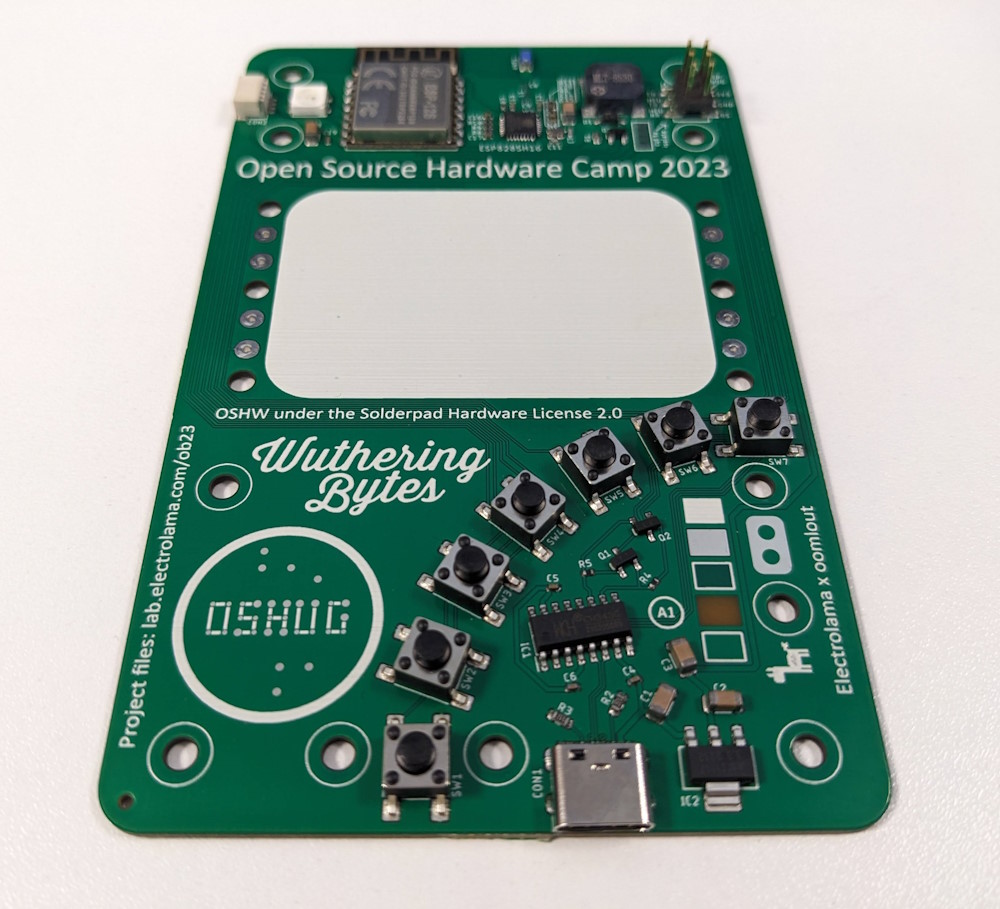
Designed to celebrate the return of the Open Source Hardware Camp as part of Wuthering Bytes 2023, this simple board consists of a WiFi radio and some peripherals around it.
It is part a name badge, part a generic sensor device using the qwiic/ stemma-qt compatible I2C port and the Tasmota firmware and even a little piece of art, courtesy of OSHUG co-founder Paul Downey:
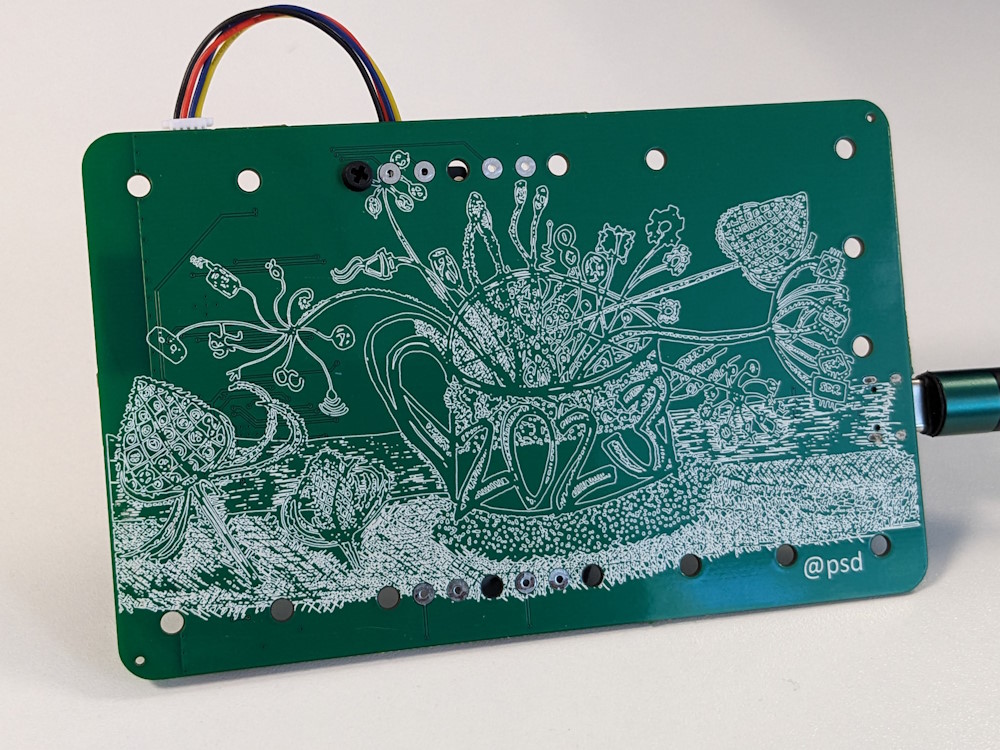
You can also use it as a comically large USB-UART / ESP-Prog adapter for your other designs!
The badge is OOBE compliant and oomlout is providing whimsical laser cut badge addons during the day:

oomlout's 3D name plate generator can also be found here.
OSHCamp being a hardware event, participants will be provided with bare boards and can build their own badges during the solder paste and reflow soldering workshop on Sunday. This, in fact, is the main driver behind design choices - this is a workshop focused badge either during the event or after.
If you miss out on the workshop fun but would like to obtain one of these badges - or maybe even order some before the event - production files for fully assembled boards are published in the Github repository.
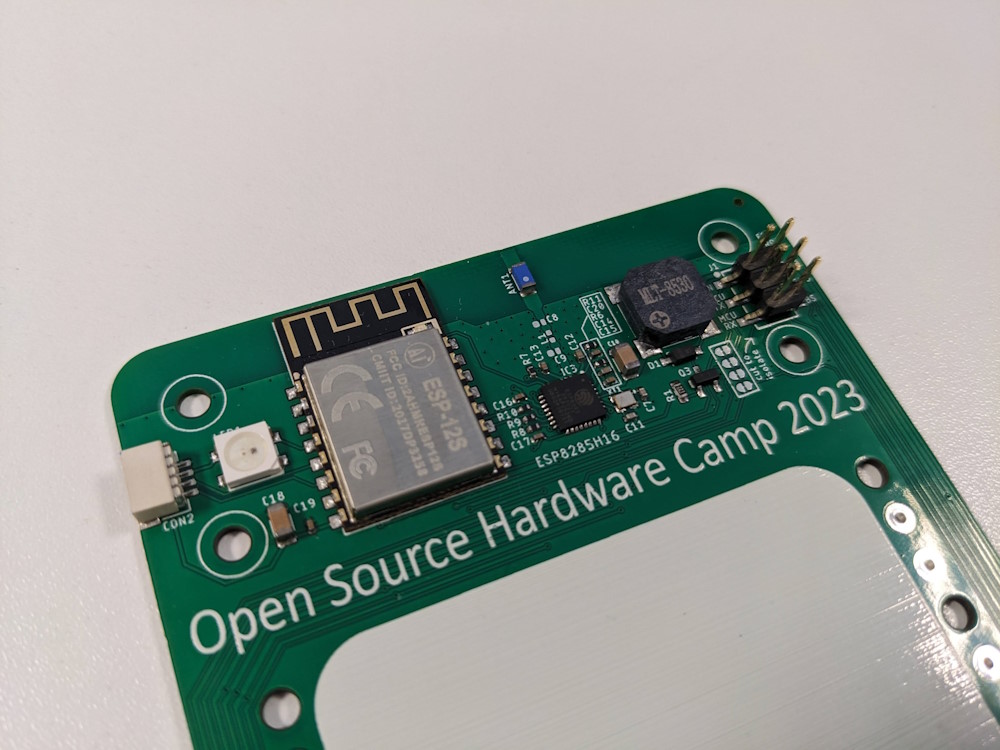
You'll notice both an ESP8266 chip (actually an ESP8285H16) and an ESP-12 module here, only one should be populated at any given time as they are connected to the same pins. They exist side by side to offer a choice of difficulty level for the workshop: If you're just starting out, put a module down or if you're feeling adventurous go for the QFN chip and a bunch more 0402 passives.
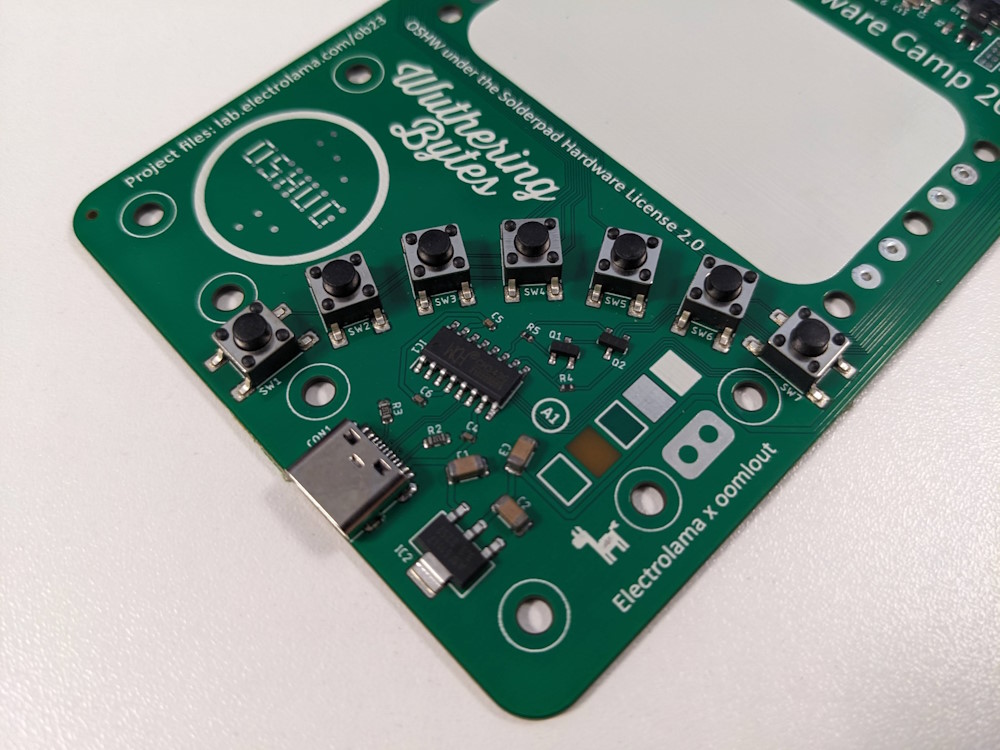
A USB-C port and a CH343 USB to UART adapter alongside a bunch of pushbuttons are located on the bottom half of the board. The board is powered and programmed through this USB port.
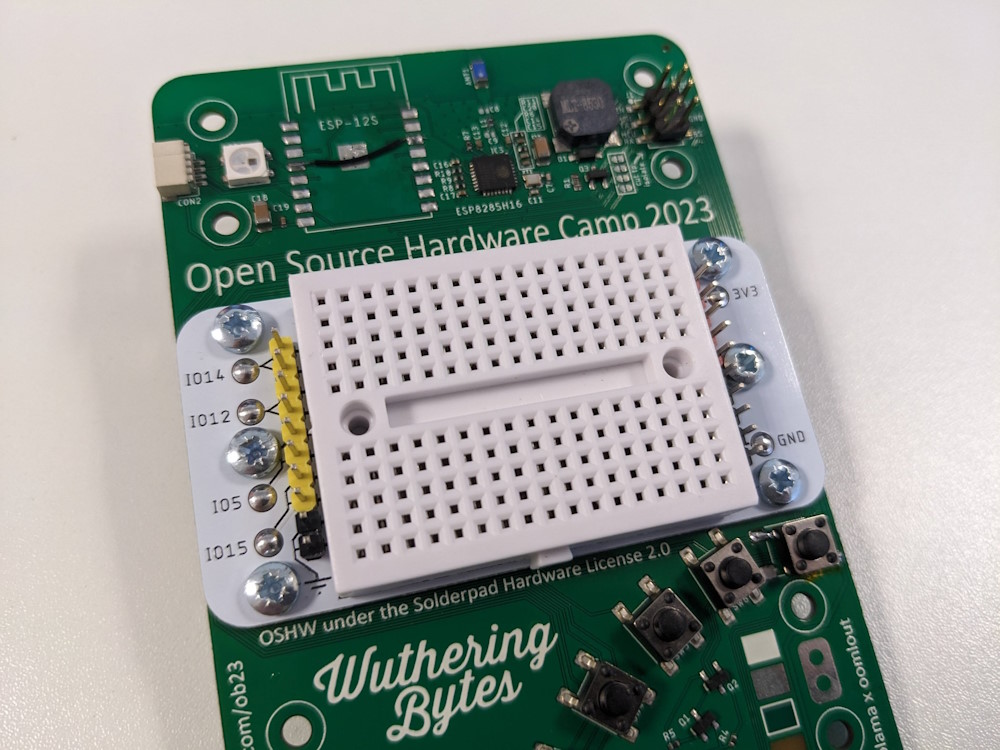
topper is a little prototyping addon that sits on top the actual "name badge" area.
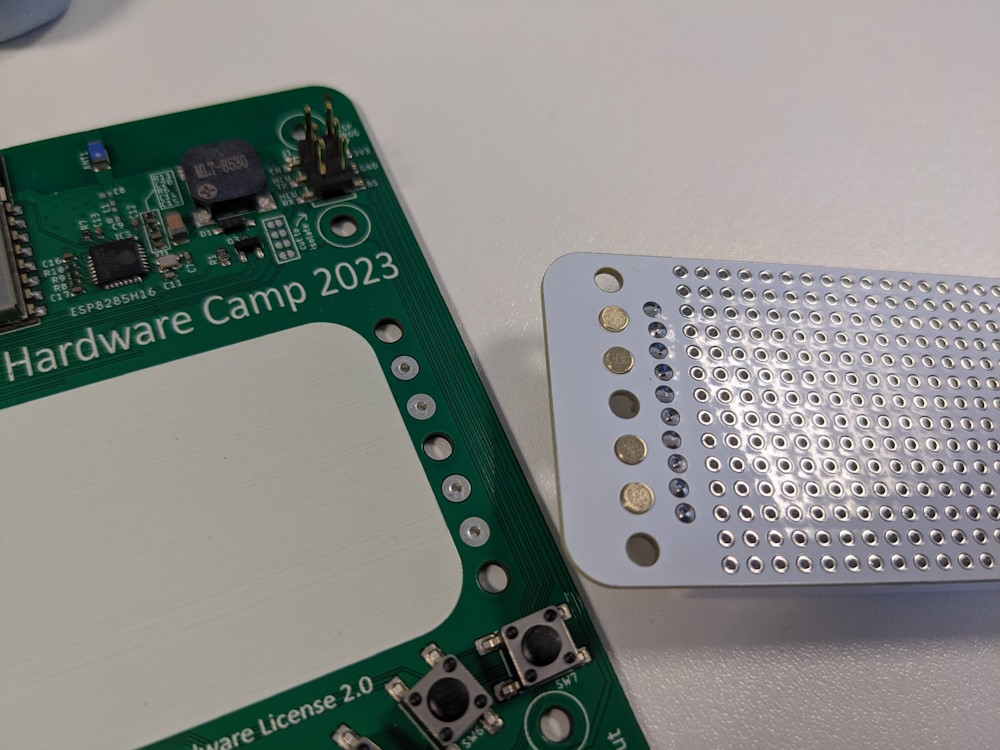
The topper board, along with some pogo contact pads, can be squished down with some screws and bolts for a solderless contact. If headers are soldered, care must be taken to ensure soldered pads do not extend beyond the metal contacts. GPIO and I2C, alongside 3V3 power is provided in this prototyping area.
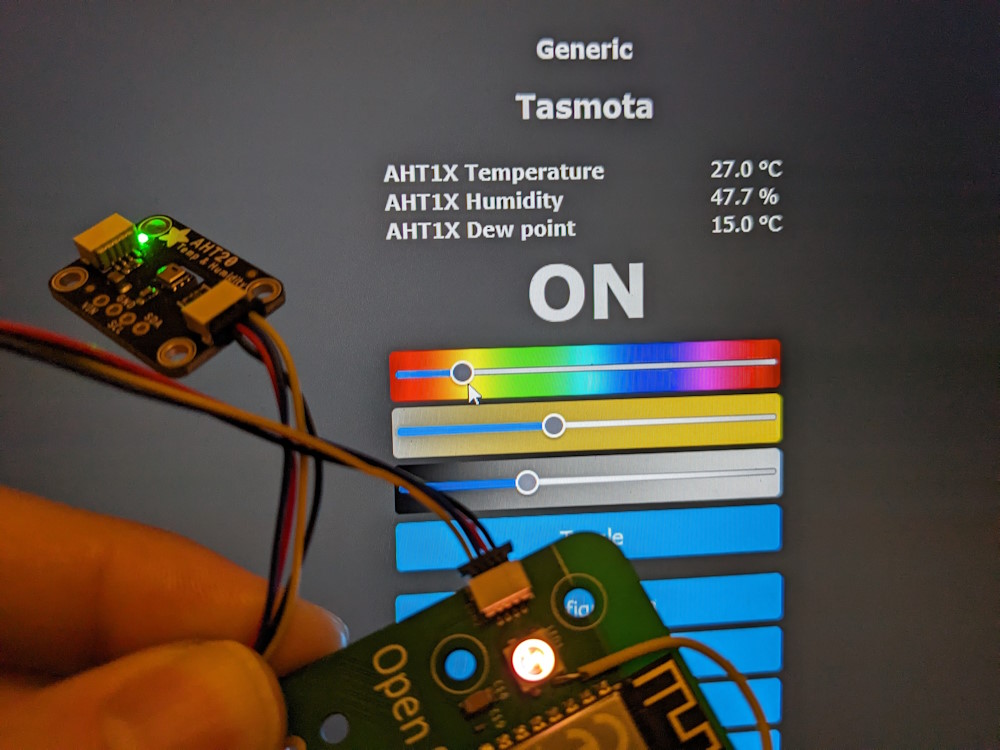
After the event, a qwiic/stemma-qt compatible sensor can be attached to the badge and it can be turned into a little room sensor running the Tasmota firmware.
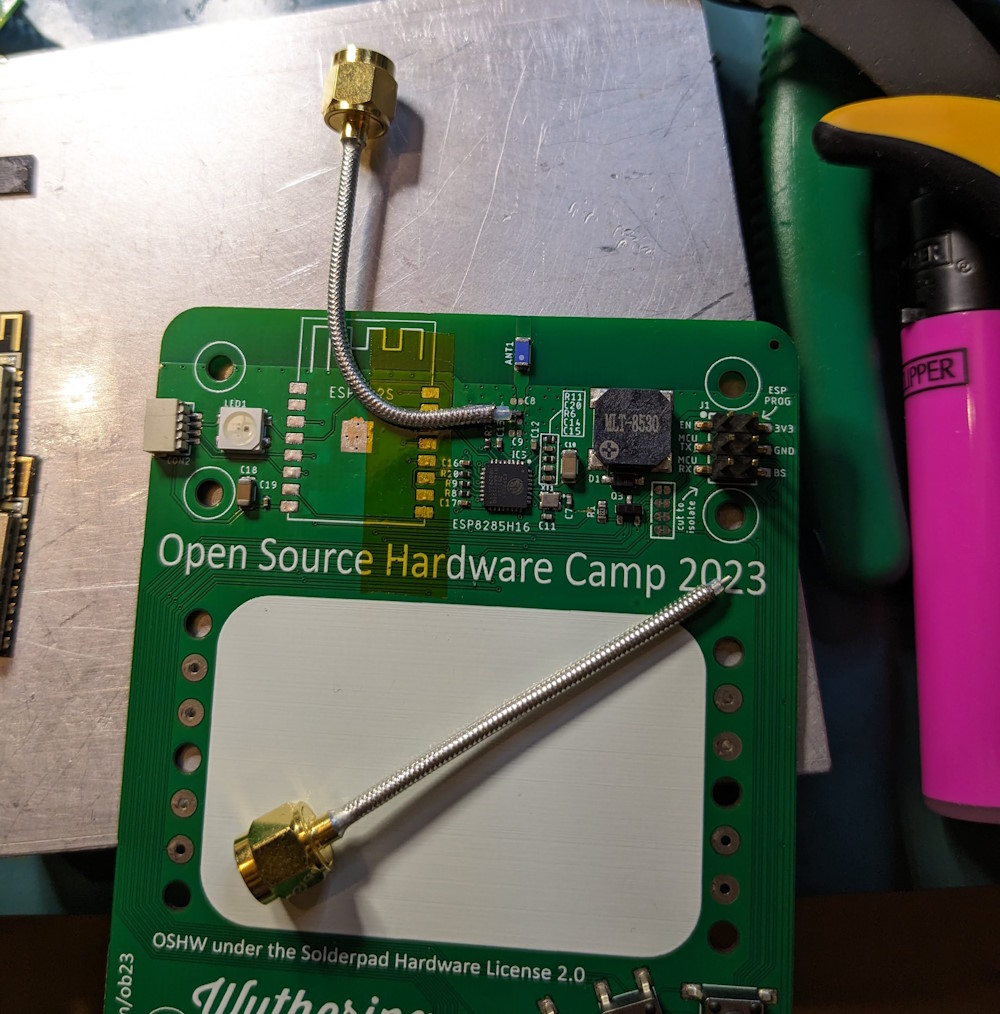
(Insert RF testing notes here...)
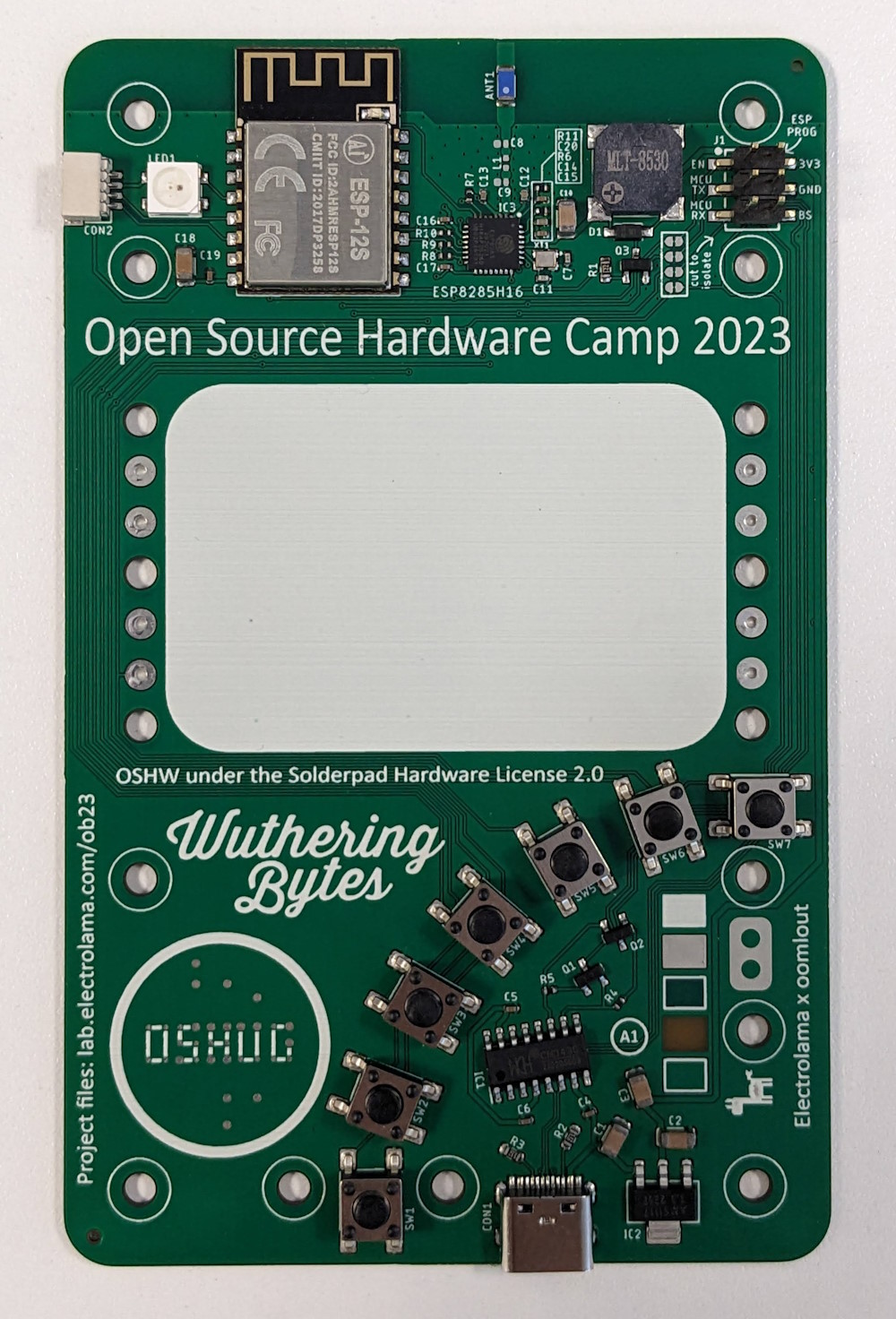
🎫 Tickets now on sale for OSHCamp 2023! - Tickets for both the Talks and Workshops on 26-27th August available at the link. Please note that there are separate tickets for both days!